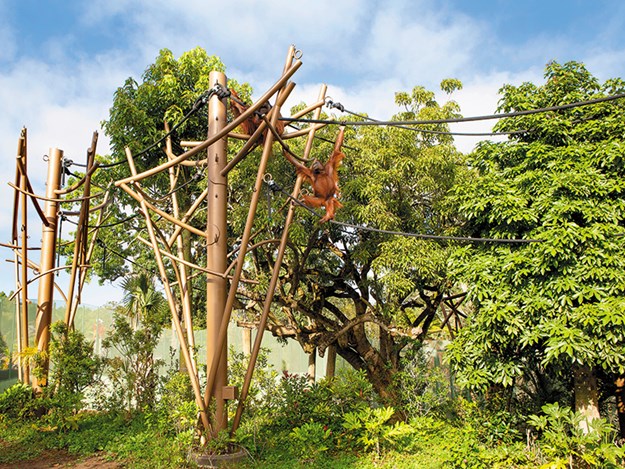 |
|
Orangutans in their high canopy primate habitat
|
Recently, motorhoming friends travelling to Auckland from their remote South Island farm asked me about the Auckland Zoo. I had to confess I hadn’t been there since my children were of an age, and that was over 30 years ago.
The concept of zoos had never really appealed. As an enthusiastic conservationist, I felt that the animals with whom we share the planet should be roaming in the wild, not miserably confined to cages to amuse chattering crowds of free-roaming homo sapiens.
But, having heard good reports about the Auckland Zoo’s dedication to the animals in their care, I decided it was time for a revisit. I was impressed to discover the 16-plus hectares that comprise the zoo area have been landscaped, sculptured and planted to resemble the natural terrain of the 135 species and over 1400 creatures that live there. The habitats are interesting, spacious and designed to cater to the needs of their exotic inhabitants. Serval cats, for instance, like to lie up during most of the day and have plenty of hideaway options. Out and about, they can stalk through long grasses on sloping terraces. They are adept at hunting low-flying birds in the wild, and so in their zoo home they have to leap for food hidden in high crevasses. I saw this sort of detail everywhere. Although one of the zoo’s mission statements is to connect people with the wonders of wildlife, the welfare of the animals is a priority.
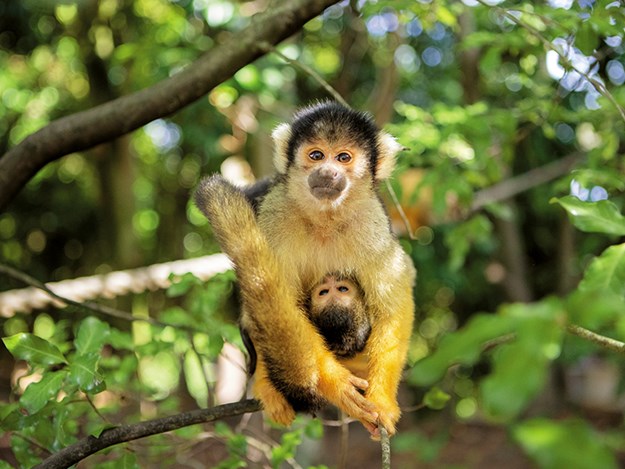 |
|
A squirrel monkey mum and baby
|
Space and privacy mean that an animal only has to face the public when it feels inclined. Discovering creatures only if they were willing to be discovered was a bit like going on a mini safari. It was much more interesting than having them thrust at me like cardboard cut-outs. And so I didn’t set out to see 135 species but to watch the antics of the extroverted.
In Te Wao Nui (the New Zealand Track) wetlands, I was mesmerised by the pied stilts and a variety of ducks all meticulously preening their feathers as if on cue. Elsewhere, a group of flamingos (known as a flamboyance) were arguing, wagging their heads and honking indignantly, and the hamadryas baboons were grooming their spectacular silver manes. The most thrilling action came from Wanita, the orangutan, who dragged an enormous ‘faux’ leaf to the top of a high post and draped it over her head and shoulders to temporarily shut out the world. This is typical behaviour in the wild.
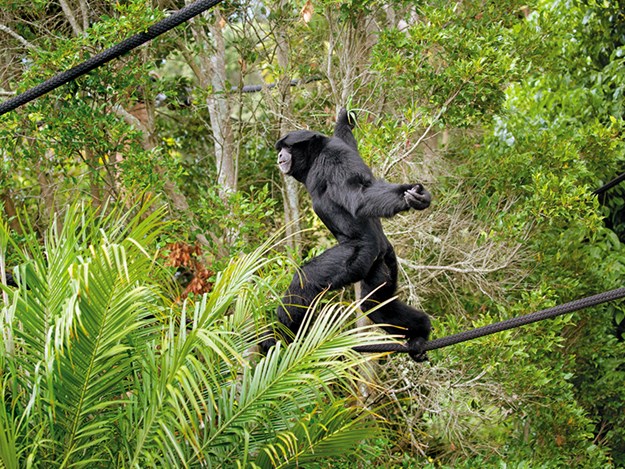 |
|
A male siamang in his arboreal habitat
|
The latest habitat development, and the most ambitious in the zoo’s (nearly) 100-year history, is the new South East Asia Jungle Track. The orangutans and siamangs’ habitat is the first of four key areas to be finished and is arguably the best in existence. Finishing touches are being made to an incredible network of aerial pathways that allows these apes to travel between habitats 25 metres above the ground so that they can live arboreally high in the forest canopy as they do in their natural habitat.
I’d been welcomed to the zoo by the siamangs’ uncanny duet of piercing yelps and echoing booms that evoked the depths of a jungle.
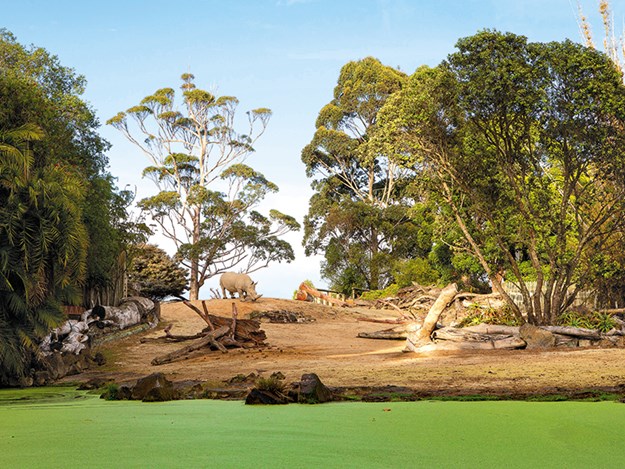 |
|
The African savannah habitat for rhino and nyala antelope
|
Fortuitously, it was also World Rhino Day, which was designed to raise awareness of the plight of the world’s five rhino species, three of which are supported in the wild by the zoo. So the stars were the six-week-old southern white rhino calf, Nyah, and her mum. Nyah was showing off, clumping around at a trot and then scattering the herd of nyala that share the space with bursts of mock charges.
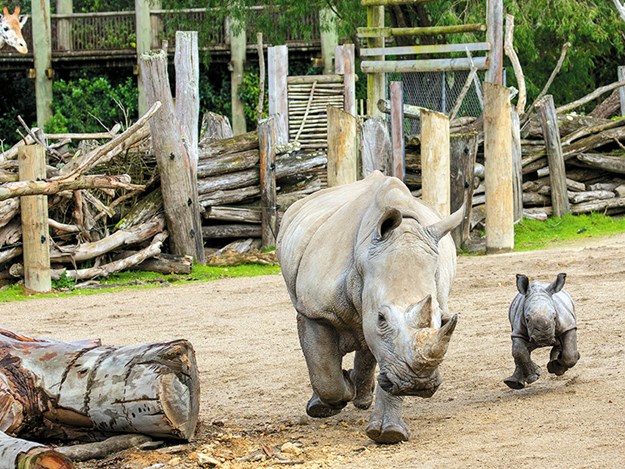 |
|
A new addition to the African section is rhino calf Nyah with mum Jamila
|
Breeding is an important function of the zoo. A large part of its conservation philosophy is to support the international breeding programmes that have seen some critically endangered species reintroduced to the wild. Many New Zealand native species are part of breed-for-release programmes. Perhaps the most outstanding of these is the wetapunga (one of the world’s heaviest insects!). Nearly 5000 have now been bred and introduced to predator-free islands of the Hauraki Gulf, ensuring a future for this endangered invertebrate. Another is that of the whio/blue duck which sees every healthy duck hatched at the zoo released into the wild.
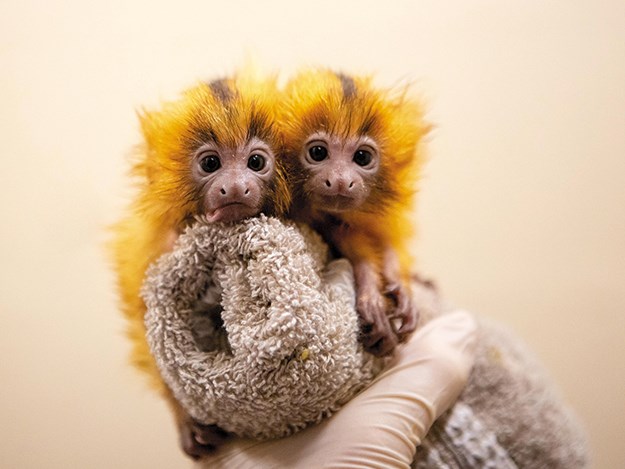 |
|
Baby golden lion tamarin twins
|
Many other offspring have been born here. The past year has seen the pitter-patter of tiny feet in the porcupine arena with the arrival of twin porcupettes. Forget the lethal-looking spines; they are heart-meltingly cute. The critically endangered red panda of the Himalayas has bred again, rare native cobble and Chesterfield skinks reproduced, and critically endangered golden lion tamarins have bred.
Conservation is at the heart of Auckland Zoo. Staff and volunteers are passionate about making a difference and inspiring others to do the same. As well as the breeding programmes, the activities they call ‘Wild Work’ include help for in-the-field projects at home and abroad, and the treatment in the zoo’s vet hospital of sick and injured wildlife.
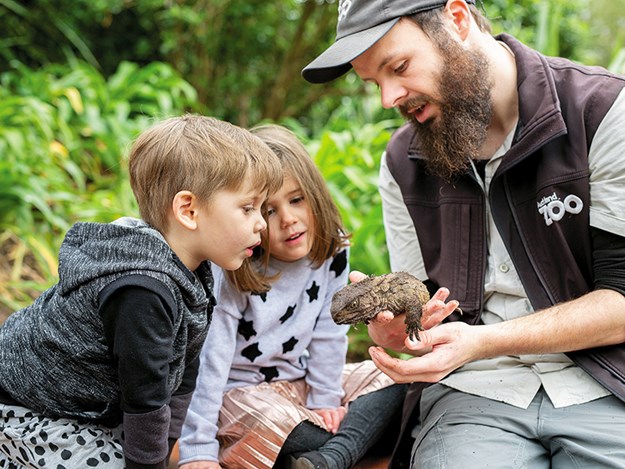 |
|
Education is an important aspect of conservation
|
It was not hard to catch the enthusiasm, and I overlaid theirs with plenty of my own. I have reported back to my country mates and told them to put Auckland Zoo at the top of their bucket list when they come to the big smoke. I don’t think they will be disappointed.
Find motorhomes, caravans and RVs for sale in NZ





